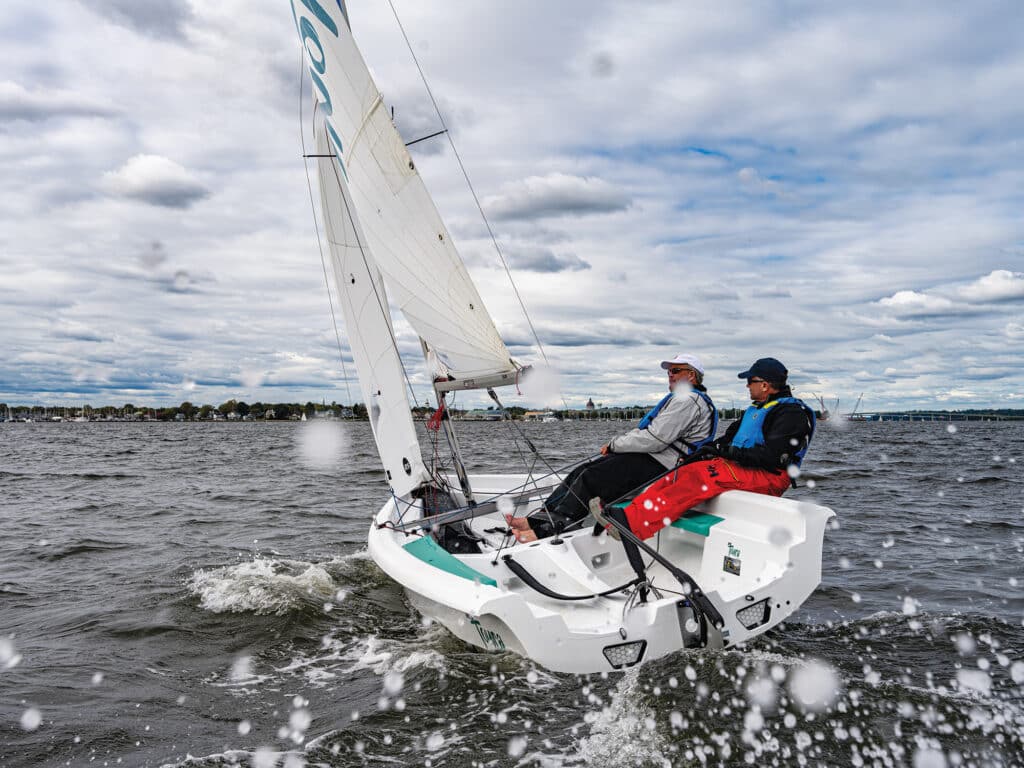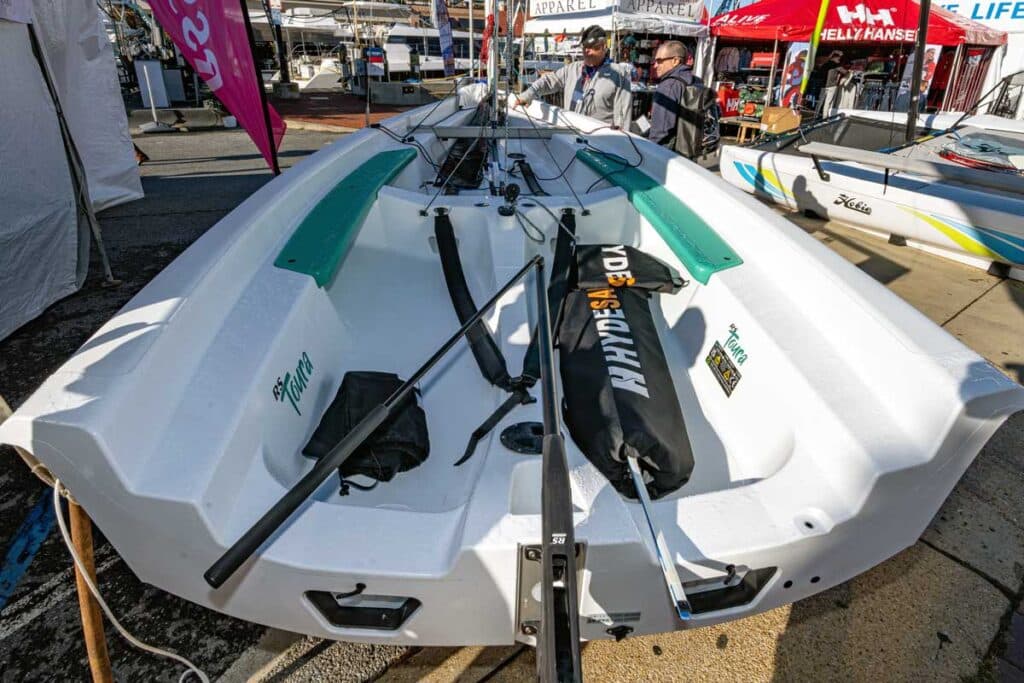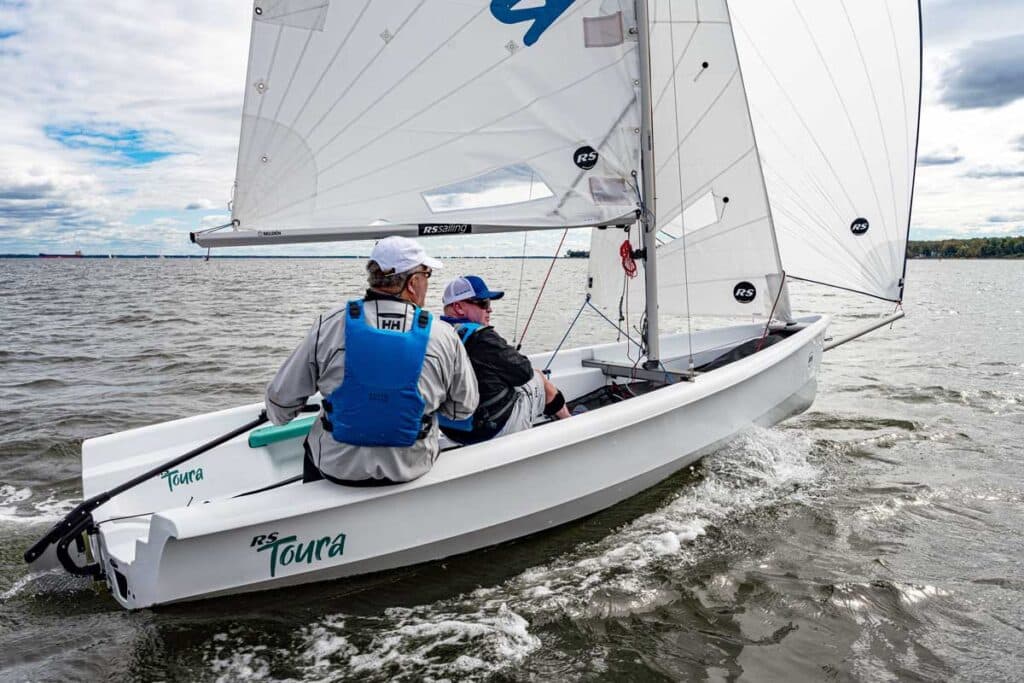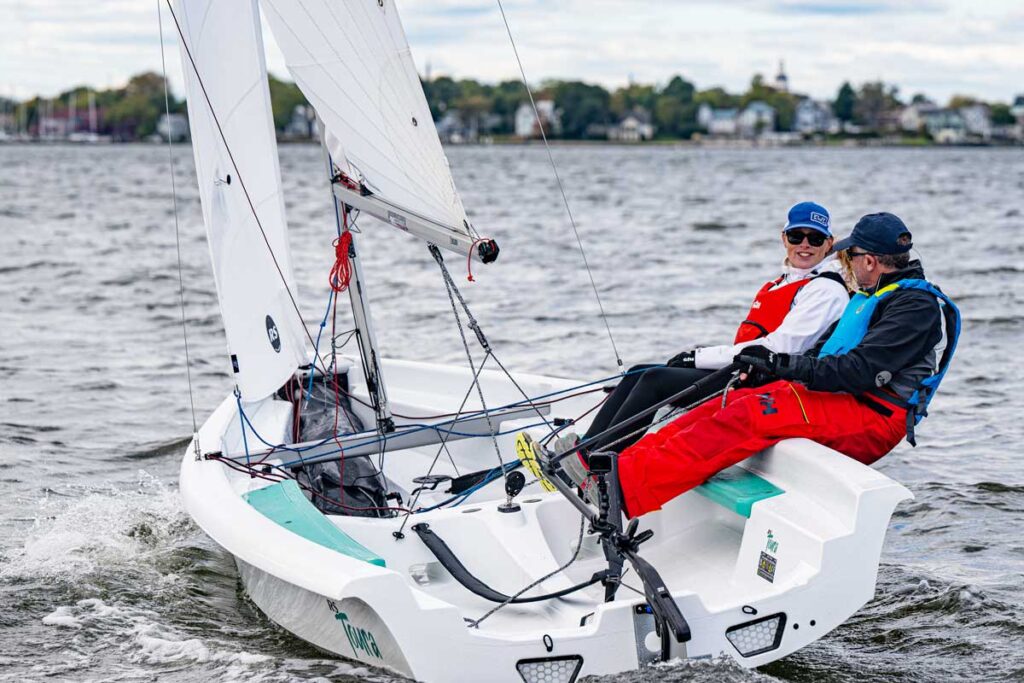
Sailboat racing’s future is inextricably linked to the flow of new sailors who walk through the doors of community sailing centers and yacht clubs. These establishments do the yeoman’s work to attract and retain sailors young and old, and often the biggest challenge is securing boats that deliver a positive sailing experience but can take the abuse. For many such establishments, the saving grace has been the roto-molded trainer, of which RS Sailboats is the dominant builder. It does plastic—and does it extremely well—and the versatile Toura is its best yet.
“This is a fantastic learn-to-sail boat because it checks so many boxes,” Mike Ingham says. “It sails amazingly well, can bounce off a dock or be dragged up a beach, and can fit a lot of people. What really strikes me is how stable and spacious it is, but somehow it performs so much better than I expected. When it comes to innovation, this boat moves the needle for me, no question about it.”
The Toura is the result of a decade’s worth of feedback from sailing programs using RS Sailing’s Quest, its most popular roto-molded trainer, of which there are more than 3,000 in use around the world. “The Quest is an excellent boat,” says RS Sailing’s Todd Riccardi, “but people kept asking for a bigger boat with a little more room.”
That’s a big ask of even the most advanced roto-molding technology because the bigger the boat, the more complex the structure must be in order to keep it stiff and durable yet as light as possible. The Toura might just be at the edge of what’s possible. RS uses what it describes as a three-layer laminate to get a durable shell—an inner layer, a foam core and an outer layer that are applied in stages. But the real structure is from skeletal-like spines that bisect the cockpit and give the boat its rigidity.

At 15 feet, and with a few inches over 6 feet of beam, the Toura is a substantial dinghy that Riccardi says can comfortably fit as many as six to eight adults and double that amount of kids. Inboard bench seating running the entire length of the boat is how it can fit so many passengers. While that might push the limits of its buoyancy, the judges agreed four large adults would have the right amount of room to casually race and learn the ropes.
RS Sailing has a well-earned reputation for developing and vetting its new boats before bringing them to market, and the Toura is no exception. The boat has many smart features that simplify the learning experience, from launching to capsizing to boathandling and sail trimming. To get the kick-up rudder on and off is a one-button operation. There’s a temporary forestay for safely raising the rig, an adjustable jib-stay purchase at the mast, a single-line mainsail reefing system, and a continuous spinnaker halyard. Riccardi says the boat’s considerable stability is capsize-prevention enough, but should it end up on its side, the square-top main and buoyancy in the bench seating keep it from turtling quickly. In the event of a capsize, however, aluminum grab handles are built into strakes that run along the bottom of the hull.

The judges, sailing two-up and three-up, never got anywhere near the point of capsize in the 10 knots of breeze for the test. With Greg Stewart and Chuck Allen first into the boat, they promptly set the spinnaker and took off. “It sails great, both upwind and downwind,” Stewart says. “It has a great feel to the helm, and I pressed it hard a few times and it never spun out. All the rigging was really nice, and the sail controls all worked. My one comment is that the 4-to-1 mainsheet gets pretty loaded because the main is pretty powerful and the cloth is good, so I’d be inclined to add a becket block to the mainsheet to get a bit more purchase.”

Allen put high scores in his notebook and says he was able to sit comfortably on the seat and use the spine as a foot brace. “We had it going pretty quick and found that with a little heel angle, the chine bites and the boat suddenly feels really stable. Great all-around performance, and with the high boom, the low centerboard trunk, and the vang on top of the boom, it was easy to get across the boat. Downwind with the spinnaker, it was awesome. Every control was easy to pull, and the nonskid had excellent grip.”









